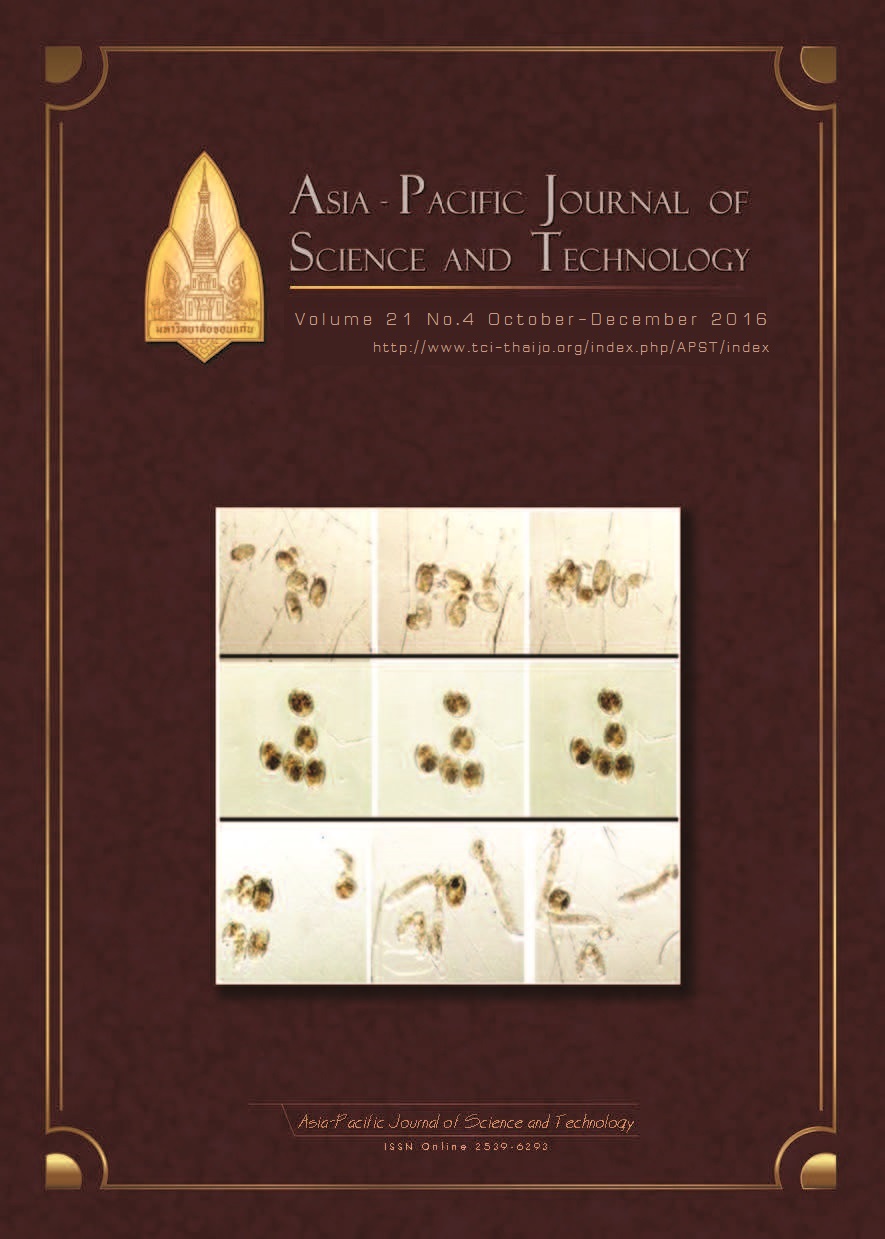CPAP therapy in a young hypertension patient
Main Article Content
Abstract
Obstructive sleep apnea (OSA) is a common cause of hypertension in adults. However, data regarding OSA are limited in hypertensive patients aged less than 40 years. Here, we reported clinical features and outcomes of OSA induced hypertension in a young patient. A 24-year-old man presented with epistaxis from high blood pressure for one day. He was at risk for OSA by having high body mass index of 29 kg/m2, retrognathia, and Mallampati class 3. There was no evidence of other causes of hypertension. The diagnosis of OSA was confirmed by polysomnography with an apnea-hypopnea index of 10 times/hour. A continuous positive airway pressure (CPAP) machine was successfully introduced. The apnea-hypopnea index was lower to 2.8 times/hour with CPAP therapy. He was complied with CPAP resulting in normal blood pressure (120/70 mmHg). No antihypertensive medication was required. In conclusion, OSA can be the cause of hypertension in young patients. CPAP therapy alone may be the effective therapy to control hypertension without any antihypertensive medication..
Article Details
References
[2] Silverberg, D.S., Oksenberg, A., 2001. Are sleep-related breathing disorders important contributing factors to the production of essential hypertension? Current Hypertension Reports 3, 209–215.
[3] Gonçalves, S.C., Martinez, D., Gus, M., de Abreu-Silva, E.O., Bertoluci, C., Dutra, I., Branchi, T., Moreira, L.B., Fuchs, S.C., de Oliveira, A.C.T., Fuchs, F.D., 2007. Obstructive sleep apnea and resistant hypertension: a case-control study. Chest 132, 1858–1862.
[4] Peppard, P.E., Young, T., Palta, M., Skatrud, J., 2000. Prospective study of the association between sleep-disordered breathing and hypertension. The New England Journal of Medicine. 342, 1378–1384.
[5] Chen, B.-Y., He, Q.-Y., 2007. [A multi-center study on the association between sleep apnea and prevalence of hypertension]. Zhonghua Jie He He Hu Xi Za Zhi = Zhonghua Jiehe He Huxi Zazhi = Chinese Journal of Tuberculosis and Respiratory Diseases 30, 894–897.
[6] Dopp, J.M., Reichmuth, K.J., Morgan, B.J., 2007. Obstructive sleep apnea and hypertension: mechanisms, evaluation, and management. Current Hypertension Reports 9, 529–534.
[7] Wolk, R., Shamsuzzaman, A.S.M., Somers, V.K., 2003. Obesity, sleep apnea, and hypertension. Hypertension (Dallas, Tex.: 1979) 42, 1067–1074.
[8] Wolf, J., Hering, D., Narkiewicz, K., 2010. Non-dipping pattern of hypertension and obstructive sleep apnea syndrome. Hypertension Research: Official Journal of the Japanese Society of Hypertension 33, 867–871.
[9] Asha’ari, Z.A., Hasmoni, M.H., Ab Rahman, J., Yusof, R.A., Ahmad, R.A.R.L., 2012. The association between sleep apnea and young adults with hypertension. The Laryngoscope 122, 2337–2342.
[10] Lurie, A., 2011. Obstructive sleep apnea in adults: epidemiology, clinical presentation, and treatment options. Advances in Cardiology 46, 1–42.
[11] Chirakalwasan, N., Teerapraipruk, B., Simon, R., Hirunwiwatkul, P., Jaimchariyatam, N., Desudchit, T., Charakorn, N., Wanlapakorn, C., 2013. Comparison of Polysomnographic and Clinical Presentations and Predictors for Cardiovascular-Related Diseases between Non-Obese and Obese Obstructive Sleep Apnea among Asians. Journal of Clinical Sleep Medicine: JCSM: Official Publication of the American Academy of Sleep Medicine 9, 553–557.
[12] Sawanyawisuth, K., Chindaprasirt, J., Senthong, V., Makarawate, P., Limpawattana, P., Domthong, A., Silaruks, S., Chumjan, S., 2013. Lower BMI is a predictor of obstructive sleep apnea in elderly Thai hypertensive patients. Sleep & Breathing = Schlaf & Atmung 17, 1215–1219.
[13] Hu, X., Fan, J., Chen, S., Yin, Y., Zrenner, B., 2015. The role of continuous positive airway pressure in blood pressure control for patients with obstructive sleep apnea and hypertension: a meta-analysis of randomized controlled trials. Journal of Clinical Hypertension (Greenwich, Conn.) 17, 215–222.
[14] Sousa, F., Neves, J., Ferreira, R., Polonia, J., Bastos, J.M., 2015. 1B.05: IN HYPERTENSION THE CHANGE FROM A NON-DIPPER TO A DIPPER PATTERN IS ASSOCIATED WITH A BETTER CARDIOVASCULAR PROGNOSIS THAN THE PERSISTENCE WITHIN THE NON-DIPPER PATTERN. Journal of Hypertension 33 Suppl 1, e6.
[15] Kernan, W.N., Ovbiagele, B., Black, H.R., Bravata, D.M., Chimowitz, M.I., Ezekowitz, M.D., Fang, M.C., Fisher, M., Furie, K.L., Heck, D.V., Johnston, S.C.C., Kasner, S.E., Kittner, S.J., Mitchell, P.H., Rich, M.W., Richardson, D., Schwamm, L.H., Wilson, J.A., American Heart Association Stroke Council, Council on Cardiovascular and Stroke Nursing, Council on Clinical Cardiology, and Council on Peripheral Vascular Disease, 2014. Guidelines for the prevention of stroke in patients with stroke and transient ischemic attack: a guideline for healthcare professionals from the American Heart Association/American Stroke Association. Stroke 45, 2160–2236.
[16] Sun, H., Shi, J., Li, M., Chen, X., 2013. Impact of continuous positive airway pressure treatment on left ventricular ejection fraction in patients with obstructive sleep apnea: a meta-analysis of randomized controlled trials. PLoS ONE 8, e62298.
[17] Mehta, S., Liu, P.P., Fitzgerald, F.S., Allidina, Y.K., Douglas Bradley, T., 2000. Effects of continuous positive airway pressure on cardiac volumes in patients with ischemic and dilated cardiomyopathy. American Journal of Respiratory and Critical Care Medicine 161, 128–134.


